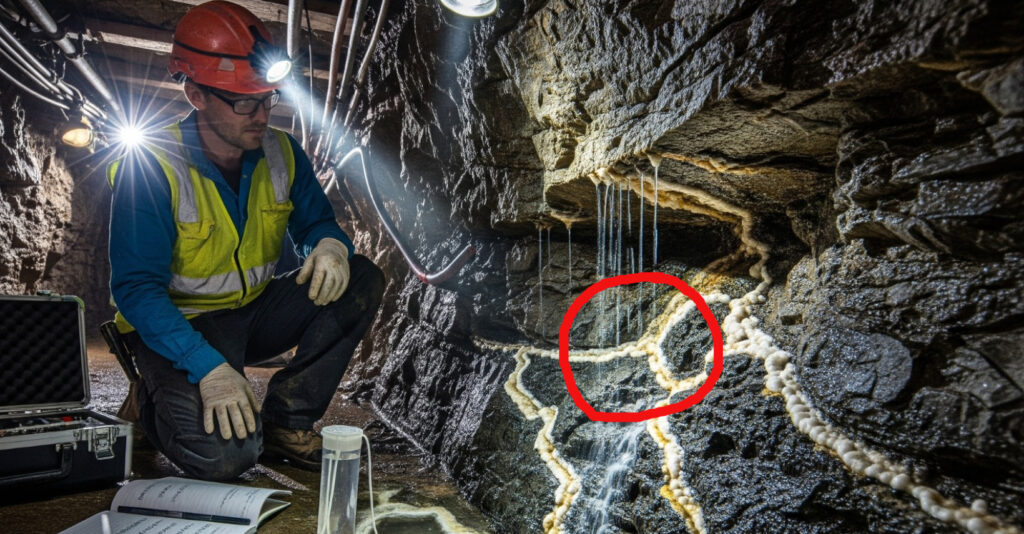
Oldest Water on Earth Found in Canada: Scientists at Ontario’s Kidd Creek Mine Discover 2‑Billion‑Year‑Old Groundwater, Redefining Astrobiology
Canada’s 2-Billion-Year-Old Water Discovery Redefines Underground Life—and Guides the Hunt Beyond Earth
TIMMINS, Ontario—In the world’s deepest base-metal mine, scientists have tapped a time capsule older than complex life itself: groundwater sealed inside ancient rock, flowing from fractures nearly 3 km underground and dated to around 2 billion years old. First sampled at shallower levels in 2013, the Kidd Creek Mine fluids were later shown to be even older, with the University of Toronto’s Barbara Sherwood Lollar and colleagues unveiling the record at the American Geophysical Union meeting on December 13, 2016—a milestone since recognized by Guinness World Records.
A time machine in the rock
The Kidd Creek discovery advanced step by step: researchers initially intercepted hypersaline fluids at ~2.4 km depth and estimated their residence time at roughly 1.5 billion years before deeper boreholes and refined analyses pushed ages to the 2-billion-year mark. Noble gases dissolved in the water—helium, neon, argon, krypton, xenon—served as geologic clocks, demonstrating extraordinary age and long isolation from surface cycles, while the fluids’ extreme salinity helped confirm their unique history.
Chemistry that can power life without sunlight
What sets this water apart is not just its age but its energy budget: radiolysis and water–rock reactions generate hydrogen and oxidants, while sulfide minerals in Archean host rocks are converted to sulfate—a combination that can sustain microbial life independent of photosynthesis. A landmark isotopic study at ~2.4 km depth documented mass‑independent sulfur fractionation in dissolved sulfate, an atmospheric fingerprint long known from Archean rocks but observed in groundwater for the first time, indicating that crustal processes can replenish electron acceptors over geologic time.
Microbial communities, proven indigenous
Long-term instrumentation at the Kidd Creek Observatory has since profiled resident microbial communities in these anoxic, hypersaline fracture waters using phospholipid biomarkers, stable isotopes, and 16S rRNA sequencing. The assemblages include anaerobic, halophilic bacteria such as a member of the Halobacteroidaceae (Candidatus Frackibacter) in well-isolated biosamplers, distinct from aerobic contaminants seen where mine air or service water intrudes—clear evidence of native subsurface life drawing on geochemical energy.
Field notes: the taste of deep time
The fluids are remarkably briny—often described as up to eight times saltier than seawater—and carry a bitter-salty profile that field teams have used as a quick gauge of chemistry during sampling campaigns, a sensory detail that underscores just how concentrated and long-confined these waters are.
A playbook for searching Mars and ocean worlds
Kidd Creek’s geochemical engine—hydrogen from radiolysis and serpentinization, sulfate from sulfide oxidation, long-lived isolation in fractured rock—maps onto conditions thought possible in the subsurface of Mars and in the rocky seafloors of icy moons, where similar redox couples could support microbial ecosystems out of reach of sunlight. As a result, the site has become a touchstone for designing biosignature strategies that target deep, chemically powered habitats beyond Earth.
Rethinking Earth’s water cycle
The mere existence of billion-year-residence-time waters reframes the hydrologic cycle, revealing a deep parallel system in which fluids can persist—or circulate—on planetary timescales far removed from surface weather and ocean exchange. From noble gases to sulfur isotopes, the tracers preserved in Kidd Creek’s waters carry signals from Earth’s early atmosphere and crust into the present, offering an archive for reconstructing deep-time processes.
What’s next
With dedicated boreholes and multi-month biosamplers installed more than 2.3 km below the surface, researchers are now resolving the metabolisms, carbon sources, and community dynamics of these indigenous microbes—and refining contamination controls to keep the record clean. The work advances a simple but profound conclusion: if geology can supply energy, life can persist in the dark for extraordinary lengths of time—on Earth and, potentially, elsewhere.
- Record confirmation: Guinness recognizes the Kidd Creek fluids as the oldest non‑meteoritic water ever identified, dated to December 13, 2016.
- How it was dated: dissolved noble gases used as geochronometers; extreme salinity corroborates long isolation.
- Why life endures: radiolysis and water–rock reactions generate hydrogen and sulfate, sustaining chemolithotrophic metabolisms without sunlight.
- Who’s there: indigenous, anaerobic, halophilic bacteria dominating isolated biosamplers at the Kidd Creek Observatory.
Kidd Creek’s ancient waters are more than a record—they are a working laboratory for life at the limits, reshaping expectations for what worlds, including our own, can sustain in the depths.